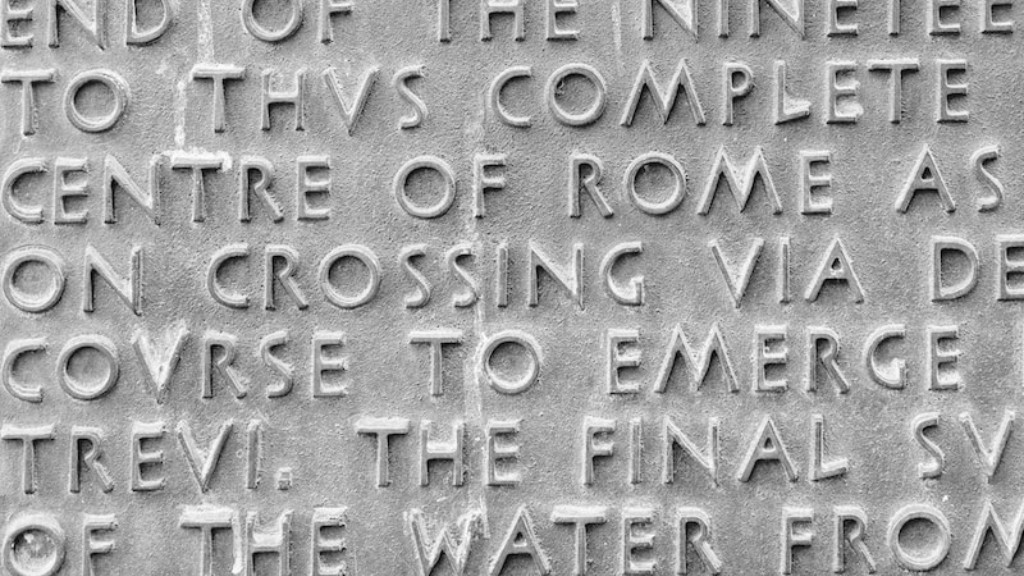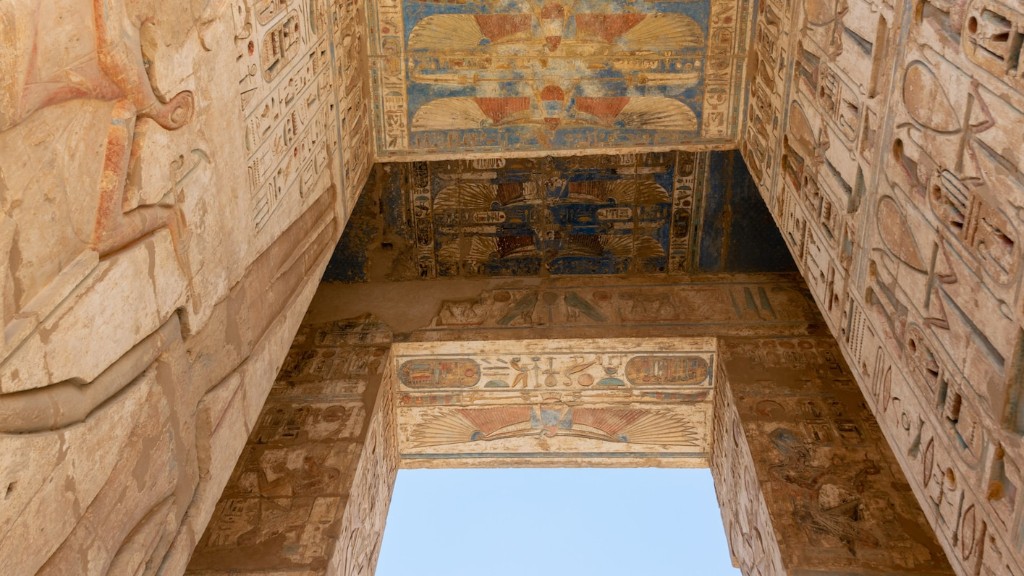Ancient Egypt is a powerful example for modernizing women’s rights and roles. Within the hierarchal structure of advanced Egyptian civilization thousands of years ago, women were not only able to take the same positions as men, but in many cases women were able to lead and inspire. Women in this society were able to manage their own money and were free to own properties and become merchants.
Historians believe that the respected role of women in Egypt is directly linked to the goddess Hathor, who was depicted as a symbol of motherhood and a sign of fertility. When local Egyptians presented gifts to the gods and goddesses, they would make sure to offer goods from both female and male roles. The two symbols of fertility, Isis and Osiris, represented the divine masculine and feminine forces of Egyptian civilization. Women in Ancient Egypt were connected with the divine feminine identity while also being respected within the land for their roles as mothers and educators.
Roles for women in Ancient Egypt were diverse and because of the importance of marriage to the continuity of the upper class, women could take on roles of great responsibility and status. Upper class women could be educated and take on official roles in government and become famous and renowned for their accomplishments. Some examples of upper class educated women are Neithotep and Merit Ptah who held the same job titles as male doctors.
In addition to upper class women, lower class women of Ancient Egypt were vital to the basic functions of Egyptian life. As weavers and potters, they created functional objects that allowed the economy to run. Women of lower classes could also gain economic and socially mobility through marriage which was the basis of family structure. Considering the importance of marriage in Ancient Egyptian society, women were able to gain respect through their roles as brides and mothers.
Particularly, women of the higher classes were afforded more rights than women of lower classes. Upper class women were able to gain recognition through their education and careers. With such recognition came the ability to conduct business in their own name, own property, represent themselves in court, and even act as guardians of their own children. In the modern world we can look to Ancient Egypt as an inspiration for how far modern society has yet to come in regards to women’s rights.
Economic Status
Ancient Egyptian women had economic rights and access to mortgages and loans. This was mainly due to how without a husband, it was possible for a woman to stand as a legal entity in the country’s courts. Although women did not have the right to take a loan from the state, it was possible to take private loans and couples often kept their finances separate from each other.
Egyptian women were also able to manage their own money and wealth. They could invest however they chose and determine their own investments in addition to being able to buy and acquire property and goods. It was not uncommon to find women actively participating in the economy as merchants, businesswomen, and artisans.
Women could also sign and handle contracts and documents on their own, an example is the marriage contract. Female poets, authors, doctors, sculptors, upper-class women, and mid-class women used their knowledge to answer questions on literature, medicine, and theology. Women could also write their own wills, which made it possible for them to bequeath their own wealth and goods.
Overall, Ancient Egyptian women had a vastly different economic opportunity and status than women of the same era in other civilizations. This was primarily due to the respect women had within the hierarchal structure of their society and because of the importance of marriage.
Religion
Religion was an important structure and resource for many aspects of Ancient Egyptian life, including the roles and rights of women. It was the religious belief that female and male together were powerful, powerful enough to create and sustain the world. Ancient Egyptians believed in many gods and goddesses and these religions and beliefs contributed to the value they assigned to women’s roles.
Hathor, often referred to as the “household goddess”, was an example of a deity that was widely worshipped and respected in Ancient Egypt. Hathor symbolized motherhood and fertility, which was fitting of a civilization that served primarily as an agrarian society, relying on the fertility of the land and their crops.
The “cult of Isis” was a very powerful religious force in Ancient Egypt, so much so that the figure of Isis carried through many other civilizations, even in modern day. Isis was the goddess of fertility, love, and nature. Statues of Isis in her ancient form with a cow’s head, was an iconic representation of the beauty and strength that could come from female figures.
At a more personal level, women of Ancient Egypt often created and wore small household gods to keep them safe. These gods were often of a goddess figure, as one would give offerings and seek protection from feminine deities. Women also believed in a large variety of lesser gods and goddesses, both foreign and local, which were personal to them.
Societal Behavior
Ancient Egyptians thought of women as second-class citizens, however, women had more status than in other surrounding societies. Women of a certain class could ascend to higher positions, however, it depended largely on the privileges of their family. When women married, their husband gave no guarantees and women had to find another profession to meet their obligations.
Higher class women could also gain education, even though the curriculum was mainly tailored for men. In terms of personal time, some women busied themselves with music, theater, playing board games, or in some cases, writing. Women would often engage in these activities with their ladies-in-waiting, suggesting some form of communal leisurely activities.
For lower class women however, relaxing was not an option. Household chores were an important part of their daily life, with tasks including washing clothes, cooking, and carrying water. In the absence of modern technology, mundane chores were a necessity.
Women in Ancient Egypt had little control in the face of their husbands, and husbands had the full right to control their children’s upbringing. This way, the husband was the head of the family. Nevertheless, the courts recognized a woman’s right to petition her husband for an allowance and a living allowance.
Female Power
Ancient Egyptians respected women’s views and opinions and there were many powerful female characters, such as Pharaoh Hatshepsut. As Pharaoh, she was supreme ruler of Upper and Lower Egypt and was respected as a powerful leader and warrior. Other famous characters include Merneith, who led Egypt while Pharaoh Den was too young to rule, and Sobeknefru, who was a powerful war chief of Egypt.
Women also influenced ancient Egyptian society through their writing. Many poems, scientific texts, hymns, narratives, funerary texts, and medical texts were written or inspired by female authors. It is believed that women shaped some of the most important philosophical and religious concepts that are still studied today.
But female influence did not end there. Women also had the role of protecting and teaching. They were vital to the continuity of Egyptian society by raising children and educating them in the home. Women of the higher class who were educated in their own rights often taught their wives and children so that they would be able to contribute their own knowledge in the family.
Overall, women of Ancient Egypt are one of the most powerful examples of female empowerment in history. As masters of many trades, it is clear that Ancient Egyptians attributed to women the respect and reverence they deserved and needed.
Social Freedom
It is clear through the records of Ancient Egyptian civilization that women had the right to move freely as citizens. Women Upper Egypt were often expected to remain in their home for most of their lifetime, but there were occasions in which they would leave the house, whether it was for a religious ceremony or to join an artistic performance.
Women could also travel independently from their husbands and even conduct their own business. Archaeological evidence suggests that women could take part in legal contracts, perform legal acts, and even act as witnesses in a court of justice. Women could act as entirely independent citizens in terms of movement.
Moreover, women were able to divorce their husbands if they chose to do so. This was well documented, with records of divorce settlements being found in the scribal tradition. These settlements were often agreed upon along with a reasonable alimony, with the court able to step in if the divorce agreement was unfair to either party.
In conclusion, Ancient Egypt gives us an incredible example of respect and feministic values through their culture. Women had the freedom to travel independently and engage in legal proceedings or open their own businesses. Through this, one can understand how, even in the ancient world, women had a strong voice and presence.





